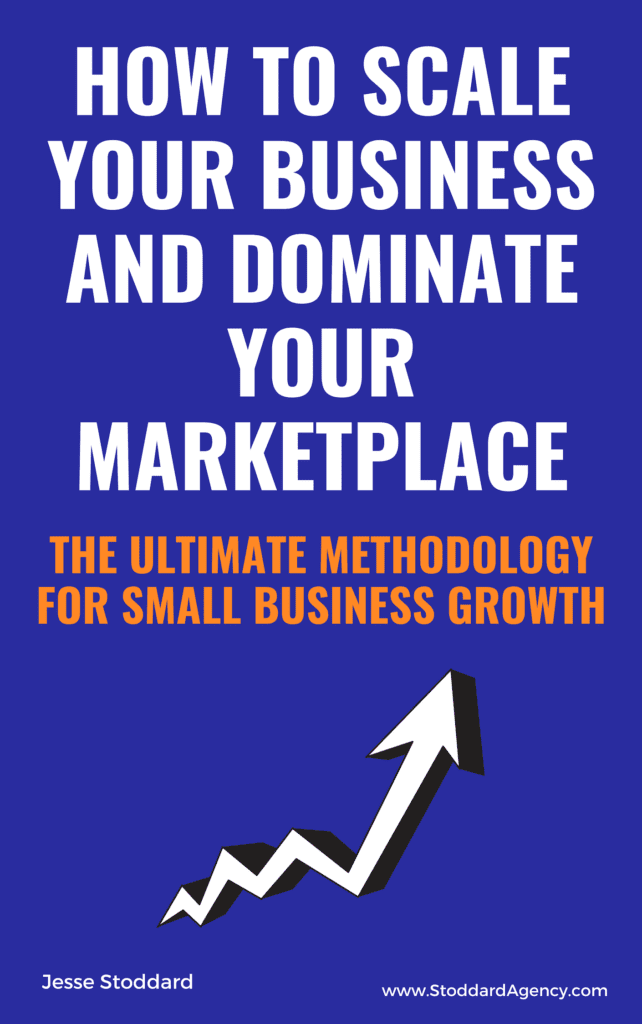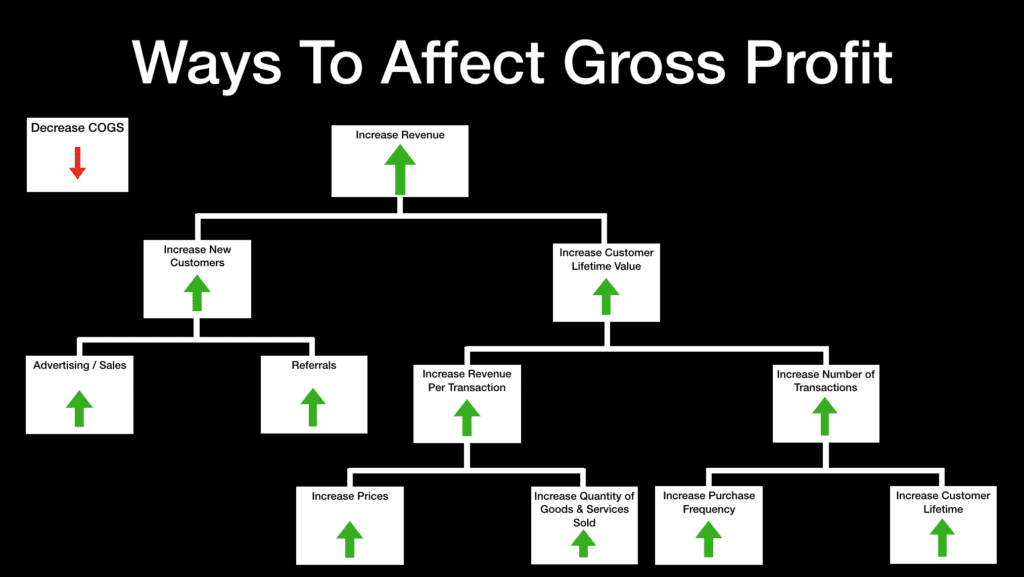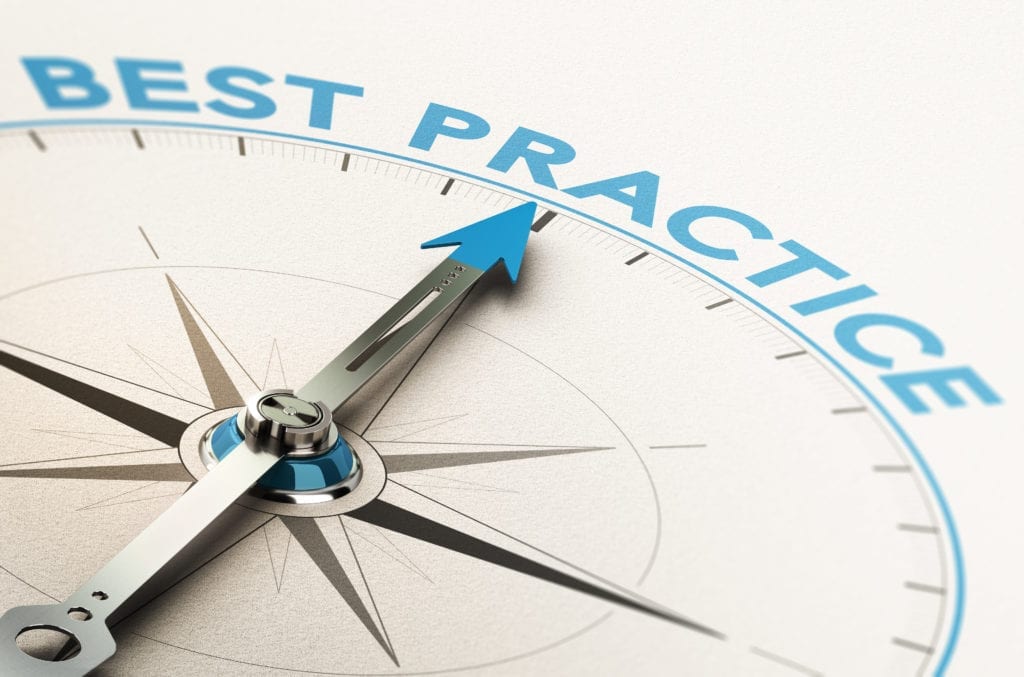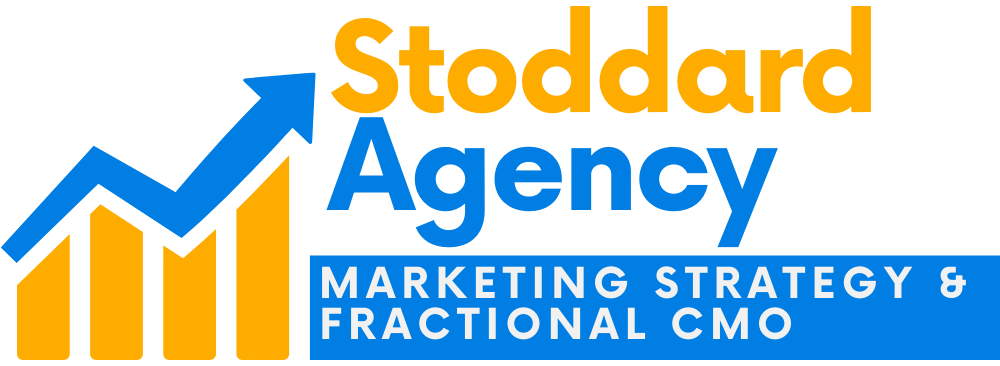Lessons from inside and outside the legal industry

In this free report, I’m going to teach you how to scale your law firm and dominate your marketplace with the ultimate methodology for small business growth, regardless of industry. You don’t even need to opt-in or give me your email address 🙂
The smartest law firm marketers avoid doing what everyone else is doing and look outside their industry to find ideas that can and adapt them to the legal field.
Don’t be one of those attorneys that kowtows to peer pressure and only does what other attorney’s think is acceptable. That’s “me-too” marketing and leads to nowhere fast.
Besides, why do you care what other attorneys think? They aren’t paying your bills.
I want to congratulate you on being reading this today.
Henry Ford once said, “Thinking is the hardest thing a man can do, probably the reason, so few of them do it,” and you are challenging yourself by thinking. That’s what you’re going to do here, and I think by the end, you’re going to be excited about what you learn.
The problem with most small law firm owners is that the vast majority are good at what they do but never get out of the “solopreneur” mindset.
There are 16 million in America who are doing their law practice as a side job and, and six million are genuinely self-employed, but only about 1.7 million are new employers with a partner or assistant. The vast majority is doing the entrepreneurial thing almost as a glorified hobby—or basically, they own a job. Starting a personal injury law practice, running a law firm, and scaling a firm all require different mindsets, different strategies, and different techniques, and for most people, this creates massive doses of stress, but it doesn’t have to.
First, decide what you want.
What business are you really in? What law practice do you want to be in? What do you want personally out of it? Are you trying to grow a large practice because it excites you? Do you want to build it up, literally, or brand recognition, et cetera, just to sell it? Do you secretly want just to escape?
“One reason so few of us achieve what we truly want is that we never direct our focus; we never concentrate our power. Most people dabble their way through life, never deciding to master anything in particular,” Tony Robbins. I agree with that quote. It’s really useful.
The Stages of Small Business and Law Practices
Recently, I attended a GKIC event, and the founder of Infusionsoft had a fascinating slide in his presentation and did training on the stages of small businesses, including law firms. If you ask 10 different people, you’ll get 10 different answers, and here’s their breakdown of these stages of small business and the biggest hurdle in each stage. We’re going to go over them one at a time because I think this is going to make a huge difference for you.
First of all, let’s look at the initial stages here, the solopreneur, which is the side job or the self-employed, and the whole focus here is usually to quit the day job. This is where most people start. Usually, it’s just one person. They’re making anywhere from 0-100K, and usually, the side job is the 0-4,000 a month, and maybe the self-employed would be 4-10. The number in the US is 16 million for the side job, six million for self-employed. The team, usually there’s an owner. They get a little bit more. Maybe they’ve got contractors, but their biggest hurdle is time and leads, and so if you’re in that phase, you know what I’m talking about, and leads, of course, is solved with marketing, which most of them have not mastered at that point.
Now, if you’re one stage ahead of this, you’re looking at being a new employer or you are a new employer, usually the sales there is the 100-300,000 dollar annual level, and the big challenge is sales, creating a structured sales environment, having trained sales professionals, and really duplicating yourself. If you’re the one that does all the sales, that can be the biggest challenge is finding someone else that will help you with sales.
Then the steady operation level, the 300 to one million, the challenge is really in marketing and the service, so really running, they call it, with the personal injury law firm (or any business), and usually, 2-10 involved, people, in the 100,000 to one million point. There’s a little gray area in there, but really, we’ve got going from maybe partner or assistant actually to have a team, and that’s where a lot of the people I’m working with are is right in this new employer and steady operation levels.
Now, the biggest hurdle for most people is just getting from solopreneur number one to number two or number three. That’s a huge hurdle for most people, and most people never do it, but you will notice that in the US, there are 1.7 million new employers, which is not huge, but it is doable.
Let’s focus now on the slightly higher level, the seven-figure business, and the growth-company. On the seven-figure business, we’re looking at about 1-3 million dollar mark, and the challenge there is people and systems, duplication, finding people, creating systems to automate what you do and so that you’re not responsible for every little decision in every moment. That’s how you start to create leverage, but in a growth company, the right advantage is not achieved until you reach the leadership and culture level where you are creating a culture around the scalability of a growth company.
Andrew Carnegie said, “No person will make a great business who wants to do it all himself or get all the credit,” and that is an example of it.”
Finally, when you look at the big picture, you see the stages from one to five, and you probably are going to find yourself somewhere in there, and I encourage you to identify what level you’re at and what the challenges are and seeing what you need to do to scale.
Another thing to remember is it’s not how much money you make; it’s how much money you keep.
How To Affect Gross Profit In A Law Firm
We’re going to talk about how do you scale, how do you become a growth company, how do you get higher up on that chart? Well, first of all, we have to cover a couple of new concepts about gross profit. There are different ways to affect gross profit, and typically a solopreneur or somebody who’s running with their company, trying to grow it but they’re still in those earlier phases, even after achieving more of a larger size, 5, 10, 15 million, typically, the entire focus is on decreasing cost of goods sold.
In other words, if we say, “How do you increase your profit?” Well, you say, “Well, here’s how much I’m making in revenue. Here’s how much I’m spending to get that. How can we save money to increase the bottom line?” That’s typically the entire focus, but the other side of it is you could, of course, is increase revenue. If you increase revenue and you keep the cost of goods the same, COGs, then you necessarily are going to affect, increase your gross profit—pretty simple calculation, right?
Let’s look at little closer at that, however. When you decrease cogs, pretty much that’s it. Most companies have already done everything they can in that area, or they’re striving to do so in, essentially additional gains in decreasing COGs are incremental at best. Typically, you save a little bit here and there, but it won’t substantially impact the bottom line after your initial effort. If you make an effort to decrease the cost of goods sold, pretty much you’ve made your savings, and then it’s difficult to continue doing that, but over on the increasing revenue side, that’s where things can really get exciting, and most law firm partners, especially small practice owners aren’t used to looking at all of the potentials there.
The first thing you could do is you could increase new customers. That’s obvious. That’s where most attorneys focus. Typically, new client acquisition is where all your energy goes, and that is an excellent place to go, and usually, if you get more customers, then you’re going to increase your profit without having to deal with COGs anymore, but let’s look a little closer at growing new customers. There are several different ways you can do that.
First of all, you can increase new customers through advertising and sales. Now, that might be where your company or you or your company are trying to focus some attention. Typically, the advertising side of it is just scattershot. It’s the shotgun method. They’re trying anything and everything, and it’s not very scientific, and sales are also not very duplicable. Typically, the focus here is to try just to ram more leads into the system to create more sales, which is not a bad thing to do, but mainly only increasing your advertising spend or expanding your sales, merely focusing on spending more money on it is just one way, or just creating more volume is one way to do it.
However, you can also increase new customers through referrals. Many different companies don’t focus on referral clients. They’re reactive to referrals. In other words, if a referral comes in, they say, “Oh, great. That’s nice. Let’s try to get more of those,” or they’re a little bit active, which is they’re trying to remind their customers occasionally to give them referrals or they sometimes ask. Then there’s being proactive and orchestrating referrals, which is creating entire systems around generating referrals and campaigns around referrals and follow-up, automated and manual follow-up systems for referrals, and contest, etcetera. There are many things you can do in that area, but we’re not done yet.
The other thing we can do in terms of increasing revenue is increasing customer lifetime value. It’s a little bit different concept. In other words, the lifetime value of a customer, how many times a customer will buy, how much they will buy is a huge area of potential growth in a law practice. In fact, I would suggest that before you even bother doing anything else, the first thing to do is look for the low-hanging fruit and increasing your customer lifetime value. There are several different ways we can do that.
First of all, we could increase revenue per transaction. Every time a transaction happens, there is an opportunity there to look at the sales process, look at the offer, look at product or service that you are offering at that moment and increase that revenue during at that one time. That could be done through up-sells, cross-sells, down-sells. That could be done through back-end offers.
The other way you can increase customer lifetime value is by increasing the number of transactions. The more you offer, having a catalog, having a process of follow-up, customizing your sales offers by the behavior of the customer. If you know a customer tends to buy a certain thing, offering more of that or something similar or something that works along with that thing that you’re offering that’s complementary to it. There are many ways of increasing the number of transactions.
In addition to increasing revenue per transaction, we can look a little closer at that. We could also increase prices. You’ve got the revenue per transaction can be affected by the price. If you increase the price, just that one thing alone can often make an incredible difference in your ROI, in that profit for your law firm. A lot of personal injury attorneys are afraid of increasing prices, but when they give it a try and they target better their ideal client, they find that the client has less price sensitivity because they’re ideal and they tend to be able to do, make a lot more money compared to the number of customers they might potentially lose if they’ve differentiated themselves properly in the marketplace.
Another thing that can be done to affect the increase revenue per transaction is to increase the number of goods and services sold. In other words, you can give a quantity discount; you can find ways to make add-on sales, you can, again, going to the backend and creating up-sells and down-sells and cross-sells. There’s a lot of different ways to increase the number of goods and services sold.
Now, getting back to increasing the number of transactions, how would you do that? Well, you could increase purchase frequency—you could work on improving the number of times someone purchases. If the average sale happens once every six months, look for ways to make it happen once every five months or four months or maybe there’s a smaller item that could be sold every two months, for example. The purchase frequency, how often someone wants to come back can also be changed by the amount of the product or service you sell and at what point sometimes can affect the number of times someone purchases.
Also, just increasing customer lifetime in general. If you’re a one-hit wonder, you sell somebody a roof, and then they never come back to you again, that’s not a great customer lifetime value. It was a tremendous one-time purchase, but what else could be done to increase that customer lifetime? Frequently, it’s as simple as the follow-up. It could be as simple as one technique. There are many, but I’ve seen people do things like a print newsletter, not email, but print, something that’s tangible that people tend to have a higher perceived value, and they don’t forget about you. Then the next time they think they need something, they come back to you. Increasing customer lifetime value is another way to increase the number of transactions overall.
When we look at ways to affect gross profit, again, we could camp out on decreasing COGs, and that’s it. There’s not much else you can talk about there. That’s one element, or you can focus on increasing revenue, which has many different factors. Increasing new customers with advertising and sales and referrals, increasing customer lifetime value with revenue per transaction, raising prices, an increasing quantity of goods and services sold, increasing the number of operations, increasing the purchase frequency, increasing customer lifetime. Look at that. Look at the number of ways that increasing revenue can impact the bottom line, and that is what I want to encourage you to do to create a company that has the momentum, that has the money, the cash flow necessary to fund growth and to fund team building and to fund your dream.

Focus On Increasing REVENUE In Your Law Firm
The real gold in them thar hills is on the increasing revenue side, which is that’s why if we want to focus on increasing revenue, you’ll need a comprehensive sales and marketing strategy. By the way, marketing provides leverage through creating advertising assets, and there are different tiers that you’ll need to achieve to build a growth company that is sustainable and doesn’t require you do everything yourself. In other words, marketing is the answer.
“Because the purpose of business is to create a customer, the business enterprise has two and only two basic functions: marketing and innovation. Marketing and innovation produce results. All the rest are costs.”
That’s a quote from Peter Drucker. He has another one that he was even bolder one, which is, “The aim of marketing is making selling superfluous.” Peter Drucker: The Father of Management. He is the granddaddy of management, so I guess if he says it, it must be true.
Let’s talk about the tiers now. The first tier, to develop this revenue focus model, is tier one marketing. That’s your foundational marking. That’s the essentials. Then there’s a tier two, which is innovation. That’s where you become more competitive in your marketplace. Then tier three I call domination where you completely dominate your market. We’re going to go each one in turn.
Tier number one marketing is foundational or essentials. Some examples of things that are on the first tier are just a plan, a marketing plan. Most companies, most owners don’t have it, even though they might be paid lip service from time to time, they don’t have it, and a budget. Most refuse or never also update the budget if they even have one.
The primary target market focus, which would be a part of that plan is another foundational element. You need to know whom you’re going to after, and you want to attract the right customer and repel the wrong ones simultaneously.
Then also, of course, the “name, rank, serial number” traditional marketing. What I mean by that is whenever you think of a business card—it’s usually those types of boring humdrum marketing pieces. Its name, rank, and serial number. If you’re in retail or if you have a storefront, you need signage; you’re going to need the logo, you’re going to need the basic stuff that you’re used to having, the brochure just to make sure that you look professional. That’s not usually going to get you a lot of new customers by itself, but it’s what people expect, and so it’s usually just there because otherwise, you don’t look like you’re legitimate.
That’s about the only real reason for it nowadays though because truth is that building out your foundation really, obviously, nowadays requires a website, Google Business and other listings online, citations, review sites, that type of thing, and basic social management. You need to have a presence that is the digital storefront. Still, though, we’re looking at that name, rank, serial number approach. It’s the basics that everybody has. It’s not necessarily going to make you stand out, even if your website is great, although you have to have that stuff and you have to be there so that you can be found on Google.
Then we need to have a basic sales funnel and basic automation. Your sales funnel may be manual. That’s the process of how a lead converts into a customer, how prospect, lead, customer, that entire process, and you’re best off if you have a very basic automation system on your website in order to handle that, in order to handle new emails and calls and follow-up process. That could be done with software as simple as MailChimp or as complicated as the Infusionsoft and the HubSpot’s of the world, but you need something basic there. A basic funnel where somebody hits your website, they opt in for some information, they’re sent an email and some follow-up, and someone is calling them, and that follow-up procedure is also documented and automated as much as possible.
Then a media mix. Now, this is getting a little bit more advanced, and I have another training on asset allocation as that relates advertising but in general, you’re going to start creating, start testing a media mix. What do I mean by that? I mean not putting all your eggs in one basket but having a variety of different advertising that is going to produce and generate good prospects and leads for you. That may be a combination of online and offline. It could be heavy in one area when you’re first starting out, but I wouldn’t rely on just one. Facebook is a great source, Google is a great source, but what else? What other ways work in your industry? Do trade shows work? Do networking meetings work? Do referral relationship building works? What are the basic things that you need? Are you going to run a coupon, a direct-mail piece, the Valpak and the postcard offers and the like. You need to begin testing those and find out what a good mix is to get your personal injury law practice off the ground.
Then the ROI calculator with analytics. Basically, you need to be tracking all of your advertising and marketing spend and find out what works and how well it works by really knowing your numbers. We call that the ROI calculator, which is something that we do routinely now for attorneys.
Then other necessary evils like when you have to do recruiting job ads and Craigslist and Indeed.com and all that type of thing. Those are other things that are foundational just because typically, especially if you’re a service-based business, one of the most significant problems you have is not only the leads but also hiring, attracting, hiring, training, and retaining good people, so you have to begin that process. All of this is just foundational essentials, basics. It surprises me how many businesses don’t even all these things in place, and they’re already off on to some other level trying to look for the next magic bullet or the next tricky thing that’s going to help them skip a step and become a millionaire without doing any work and without having a good product or service.
That’s not what … If that’s what you’re looking for, you’re not going to like my information or my presentation because there really are no shortcuts. Laying the foundation for a good law firm always requires the essentials, and there are those essentials.
Now, tier two is innovation where you get more competitive. Some things that I recommend at this level after you lay the foundation is to create omnipresence if I can borrow a term from my buddy Frank Kern. Omnipresence is about creating a lot of great content and goodwill into your marketplace and having lead generation systems. In other words, it’s where you look like you’re everywhere to your ideal target market. Not to everybody. You’re not wasting massive amounts of money on advertising to the unclean masses. It’s just to the people that you think are the ideal target market, and that is with great content that positions you with credibility and authority and even celebrity over time so that you look like the go-to person or company when it comes to your product or service to your target market.
The other thing that we want to establish is getting all of the low-hanging fruit as possible. There is so much money to be made for a lot of small businesses right under their noses that they’re not paying attention to, and you want to make sure that you have turned over every stone. One example is unconverted leads. What do you do? What’s your system for unconverted leads? How many times and how many ways do you follow up? What is your exact process because remember, you spent money to get that lead, and now they didn’t say yes right away. Well, what do you do?
Most studies show that it takes at least seven, six, seven, nine follow-ups before someone’s even going to say yes to an offer, and many times, people take more than at least 90 days just to consider you and sometimes don’t actually buy anything from you for six months, so if your entire system is designed to get them to close today, one-call close, but what about, and you close it even 50 or 60%, which would be amazing, what do you do with the other 40 or 50% that did not buy today? Well, most of the time, companies have a lot of money that they can make with those lists, and they’re not doing it. Instead, they’re just going and looking for more leads. In other words, you have holes in your bucket.
There are some techniques that work. A quick example just to give you one is the “throw under the bus” technique, which is if you have a sales force and somebody wasn’t able to close the sale, the manager or you call up the customer and say, “Hey, I’m really sorry that so-and-so, John wasn’t able to help you as well as we thought. He must’ve done something wrong. He’s having an off day. I think he was under the weather, but the good news is, is we’ve got Sally over here, and she’s our number one sales representative or customer service representative. She’s able to, I think she’s going to be able to help you a lot better. She knows all the cutting-edge information and has a special offer for you.” That’s the throw, he basically threw John under the bus and gave it to Sally, all of John’s unclosed leads, unconverted leads. Then you do the same with Sally, all of her unconverted leads, you throw her under the bus and give them to John. Little techniques like that are, they sound clever, but they really do work.
Outbound Calls For Personal Injury Leads
Oftentimes, we’re so inbound focused. We’ve got the leads, and we call them, and then we’re just looking for more leads, but we don’t actually get aggressive with outbound calling. I’m not just talking about call centers and cold calling. I’m talking about calling those people multiple times later on in the process for follow-up.
Then there’s swapping leads and selling leads to other companies. If you have leads that you can’t close and you possibly can make an affiliate offer, or you could sell those leads or swap those leads with another company that does something similar but not directly competitive, or even directly competitive sometimes. If you have a list of leads that you were not able to close and you’re providing a housecleaning service, maybe then try to swap them with the carpet cleaning business and vice versa.
I don’t know if that was a great example, but that’s just the first thing that came to my head, or there may be companies that you would purchase the leads, your leads. If you’re a lead generator and you’re growing your business, which you’re going to be doing a lot of marketing, then you want to get the best return on investment you can because you have customer acquisition cost. You have CAC, customer acquisition cost. We want to increase customer lifetime value to increase our ROI, but we also want to maximize the ad spend, maximize what we get out of that lead. All of this is low-hanging fruit stuff that most companies, most small businesses are not looking at.
Then also back-end offers. I mentioned it before, but you’ve got up-sells where they buy something, and immediately, whether it’s online in the cart or whether it’s offline and it’s an ask from a salesperson, but what else would they buy at that time of transition, if they say no to the offer, what maybe lower-ticket item could you sell on their way out, or what other things that are related and complementary but may not be normally thought of as an up-sell, but the person may be interested. These are all things to think about before you go and just try to expand everywhere in the marketplace. There are probably a lot of holes in your bucket to fill.
Then you can focus on referral partnerships, strategic alliances, and affiliates. Same concept. I mentioned it before, but basically, you want to find these people, target them, and treat them like a friend, a valued partner for ongoing long-term business relationships, and you have to actually create marketing funnels, marketing campaigns around your referral partnerships and strategic alliances. Instead of just reacting to them, you want to orchestrate that.
Then there’s tier three, and tier three is about domination. Getting there requires, first of all, multiple target market expansion. When I mentioned the target market, I meant was finding your ideal customer. Usually, in a law firm, there’s more than one. You may have, for example, working with a cross-base cleaning and pest control company and their primary target market is a homeowner, but then their secondary market is real estate agents. Now, they’re two totally different markets. One of them is B2C, business-consumer approach, and the other market is a B2B. In other words, a referral relationship, but sometimes, those strategic alliances are also customers. For example, the real estate agent who owns a home also might actually be a customer simultaneously with referring customers, and so, therefore, they are a different target market, which requires different ad copy, different marketing, different advertising, and a different follow-up approach.
Once you develop and get really good at one, then you can add another one. You should pick one at a time so that you don’t get overwhelmed, but you can pick one at a time, master it, and move on to the next one. Really that’s how you dominate is by having multiple target markets going on simultaneously. That requires sophisticated multimedia, multichannel, multi-step campaigns, so different kinds of media online and off, different channels, different methods of doing it, and making sure that they integrate so when you send a direct mail piece, it integrates with your website. You send them to a landing page, they download something and receive something in the mail and then go back offline again, so you can do online, offline, and vice versa. There are multi-steps, there are follow-up procedures in there.
Research and development is another thing that could also be labeled: testing, testing, and testing. Anything where you’re looking at new channels, you’re looking at new media. You have to continually be looking for new opportunities or out of the normal type of marketing that you want to test first. Maybe it’s out-of-category advertising. You’re putting your advertisement in a place that most people wouldn’t expect it because you’re the only one there rather than competing with everybody else in a small pond for the same fish.
Second and third business opportunities. Oftentimes, you’re a personal injury attorney, and you come across an opportunity as you grow and realize it’s even better than what you originally started with. Now, I’m not talking about the shiny-object syndrome and changing focus entirely, but you have to be open. Sometimes, you will find something that’s an add-on to your business or that is instead of your business, it ends up being more profitable than your initial idea, and that’s very common as a law firm grows.
Organized project management system is huge, especially in, and I’m talking specifically about marketing, not everything else in your business, of course, but marketing itself needs to have project management. There’s going to be all of these campaigns for the different target markets, and they’re going to be very sophisticated with multimedia, multichannel, multi-steps, so you have to have a project management system that will work with that.
By the way, Teamwork is great software, but the software also doesn’t replace human being interaction with leadership and team training, so you’re going to have to people that work well together. You’re going to have to attract, recruit, hire, train, and develop a leader. If that leader is you, high, or you’re going to have to find somebody to help you with that leadership process.
Just a quick review. We’ve got the tier one marketing. That was your foundation essentials. You’ve got your tier two marketing, innovation. That’s where you get more competitive, and then you’ve got your tier three, which is where you dominate your marketplace.
Building Your Legal Marketing Team
Now, the last thing we’re going to talk about is building your marketing team. We’re going to talk about the proper and effective delegation at acceptable costs because, let’s face it, if you grew this law firm and you want to sell it someday or you wanted to live a life of freedom and luxury, you can’t do everything all the time forever. At one point, you’re going to have to retire or die trying.
Although a law firm typically runs differently from other service-based businesses, you can still draw from the ideas that follow about sales managers and directors of marketing. All you have to do is think about how your paralegals, reception, and partners will work together to achieve the same outcome as my example. With that being said, let’s dive in.
Let’s talk about the growth company example of delegation, team building, and leadership. Well, first of all, there’s going to be a CEO, president, or whatever you want to call you. Typically, what happens in a growth company is they build a frontline management team. They’ve got their CFO or accountant. They’ve got a COO, CIO, whatever you want to call them, or a general manager, somebody that’s handling operations or in charge or operations. Then usually you’ve got someone on the marketing and sales side. This could be a chief marketing officer or the VP of sales or someone who’s in charge of top-line revenue growth. That’s basically your core team in most companies, or it looks something like that. You’ve got someone who’s in charge of financials, someone that’s getting the actual jobs done, production, and then people in charge of bringing in new personal injury clients.
Now, this could look a little, the relationship between the chief marketing officer and the VP of sales or the sales manager can look in different ways. It could be a chief marketing officer’s in charge of the VP of sales. It’s often if you’ve got a really good strategist as a CMO, their job is really, is sales and marketing. Their job is the entire top-line revenue generation of the company. High-level CMO’s make, on average in the US, $125,000 a year is I think the last number I saw, and that’s average. A lot of them make a lot more than that. Smaller companies usually can’t afford them at all, and then a VP of sales is usually highly paid, of course, because they’re based on incentive as well. This is a lot of money, and these are usually, these are your higher guns that are really bringing in the revenue.
It also might be the flip side. It might be the VP of sales is in charge of the chief marketing officer, or oftentimes, they’re lateral to one another, and they’re under nobody, they’re under you, or some other arrangement depending on what your org structure is, but those two are typically related to working together in some capacity.
A realistic startup and small company example might look something like this: Typically, we’ve got the CEO/president (you), and you’re doing everything, and the first thing you find is the CFO/bookkeeper/office manager or someone who’s playing that role. That bond is usually pretty quick because you need to pay your taxes and you need to do a lot of paperwork and L&I and et cetera, and that’s your HR and everything.
Then you get another salesperson so that you can leverage yourself and make more sales. That person usually is working directly with you. Even though you want them to operate under a sales manager at some point, you end up with a GM or a field manager, a VP of operations or something like that. Now that person’s in charge of getting all the work done, and they end up with a very vocal productions person who is tied with them but also continually talking to you and so it’s kind of confusing who’s boss sometimes where you’re in the mix all the time.
You get another sales person in there who ends up, for some reason, working closely with VP of operations and with you. There’s a little bit of confusion there. Then you get another salesperson who reports to the initial salesperson who’s not really the boss and kind of mentoring them. Then you get another salesperson who’s, decides to circumvent all of it and just go directly to you again, so you’re connected there. Then also, there’s some confusion because they end up yapping to the bookkeeper/office manager all the time about their problems who end up getting involved with that, and there’s a little bit of confusion here in terms of who’s in charge. Then you get another salesperson because you’re trying to expand rapidly and that’s the way you do it, and they circumvent all the whole system, just go directly to you.
Then finally, you get a personal assistant or a receptionist/marketing assistant to help you with marketing. This is typically what the average small business or startup looks like. No rhyme or reason, a spiderweb of complexity, and you are at the center of all it. You’re the bottleneck of it all. You’re trying to delegate, but most of the time, you end up doing everything anyway. Does this feel like you? If so, don’t worry. I’ve got a better set of options for you.
By the way, let me go back one really quickly here. When you look at this here, this structure, that final piece that you added typically was somebody, this personal assistant, reception, marketing assistant, typically that was what I call Batista Betty or basically, Barista Betty or the local coffee shop kid that you hired as an assistant to do a variety of different things. Maybe they were your receptionist, maybe they were kind of a personal assistant, and you’re throwing them marketing stuff to do.
The problem with this is that person is in charge of the most important thing in your entire personal injury attorney marketing plan. We already established that. Remember the Peter Drucker quote? Basically, you, you’re in charge of two things as the CEO, as the owner. There are two things you should never completely relegate or delegate or abdicate. Your responsibility is the marketing and the checkbook. You always need to know what’s going on with the checkbook, and you always need to know what’s going on with the marketing.
We already established how important that is and how it really is the lifeblood of the whole law firm, so why on earth would all of these owners just hire it out to some person that last week was flipping burgers and this week is now your marketing assistant and/or virtual assistant in some other country that doesn’t even understand what’s going on in your office? Why would you ever consider doing that? I think it comes out of this idea of the desire to stay in control and also not valuing the true benefits of marketing and thinking that the doing of the personal injury attorney marketing is still the most important thing.
If you’re an attorney, handling cases is the most important thing. If you’re a plumber, it’s fixing the toilets and the pipes. That’s the most important thing, but the truth is, is that the doing of the thing can be hired out a lot easier than the selling of the thing, and that’s what marketing and sales are all about. Giving that power to that person with probably zero experience or maybe they went to school for it, but who cares because the book-learning is, as you know, if you’re an entrepreneur, you know book-learning has nothing to do with the real world 95% of the time and all of the real training happens on the job anyway. Book-learning is good, but why would we give that responsibility to Barista Betty?
Well, because what you really need to do is find someone who has the experience, and it’s either going to be you or it’s going to be somebody else that you’re going to have to pay handsomely. There is a better set of options.
First of all, we start out with you at the top, and you probably have your sales manager, VP of sales, and you make sure that they are responsible for the salespeople. You might keep your personal assistant or reception, but instead of making them in charge of all your marketing, you keep them as an assistant, which is helpful, and you find a CMO, a real CMO, chief marketing officer, somebody that understands personal injury attorney marketing, not just knows some marketing tricks, not just digital marketing expert, but somebody that understands offline marketing. That includes print, online marketing strategy, business plans, and marketing plans, funnels, the big picture of it all, the strategist.
Why do you need to find that person? Because that’s how you’re going to get leverage in order to continue growing your law firm and not have to do every little thing that happens day to day. You may not be big enough for that CMO, but this is typically what you’re going to have to look for eventually, and you continue to add salespeople with the help of great advertising and marketing to give them leads, and that’s how you grow.
Then typically, you’re going to end up with a marketing manager, and the marketing manager is someone who does the day-to-day work of the marketer instead of your personal assistant and is handling all of that project management work with the CMO oversight as a strategist. That’s how you build a very strong sales and marketing department.
Now, this might look a couple of different ways. Sometimes, you’re there, and the sales manager with all the salespeople is in their spot, but they are lateral with the CMO. It may look more like this. There are a lot of different options there.
Now, here’s a lower cost or smarter solution. There’s you, there’s your sales manager with your salespeople, but now you have a personal assistant or reception who’s already doing a little bit of marketing but you outsource to a CMO on the outside of your company more on a consultant level, which is, by the way, what I do, and what you’re getting there is you’re getting the advice directly of this Consigliere, this right-hand man, so to speak. Sorry for the mafia reference there, but I just think it’s apropos some time for this.
It’s someone, a trusted advisor, basically, and as you grow your sales team, you also may outsource the marketing manager. In this case, the outsource CMO is in charge of the outsource marketing manager. They are a team outside the company. Now, why is this better? Because you’re paying a fraction of the cost. For a much smaller rate, you can basically have that person give you advice in independent contractor fashion. Then your personal assistant or reception can help you with a lot of the doing of it, and the marketing manager through basically project-based work can get a lot of it done for you as well. This is what a lot of small business haven’t ever thought of doing but helps them transition into becoming a larger law practice.
Also, another option would be to have your same setup with the sales, but you outsource the CMO, and then you hire an in-house marketing manager. Oftentimes, this is somebody maybe if you had a marketing assistant and they have a lot of experience, and with a little strategy from the outsource CMO, they could be educated and trained in order to be a real marketing manager. Then they’re set up to do that work in that capacity.
This is one of my favorite models, and it’s what I’m working on currently with several different businesses, and I’m excited about that. If you want to learn more about one of these options or see what the right fit is for you, then come check out what we have at Stoddard Consulting where we build the plans with automation funnels, the direct marketing model, sales copywriting, and the ROI calculator. You can find more information by contacting us. Thank you very much. I hope you’ve gotten some good, new ideas out of this, and I look forward to hearing from you soon.

We never sell your information and always treat your email with respect.





